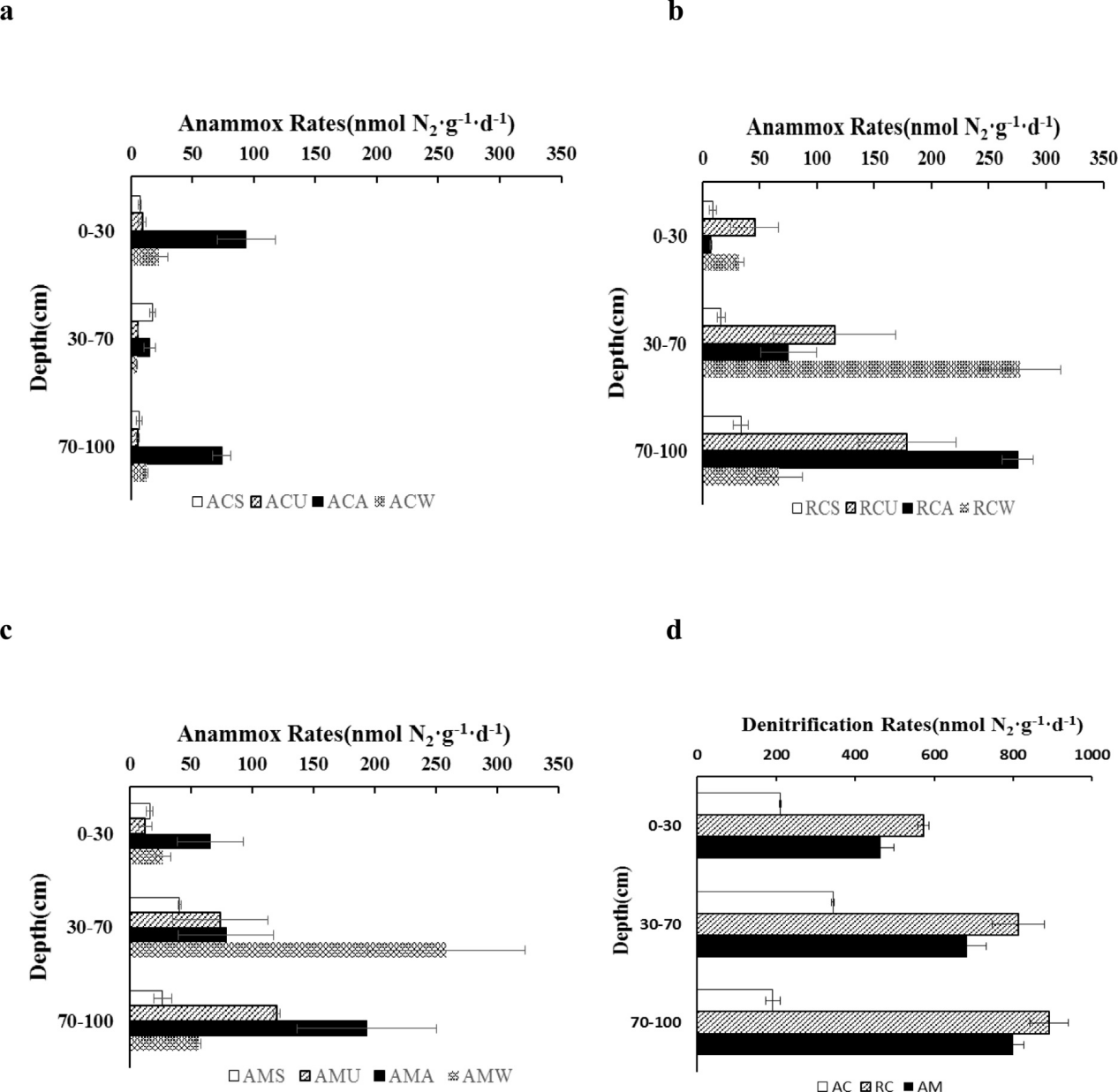Zhang M.P., Dai P.L., Lin X.L., Lin L.A., Hetharua B., Zhang Y.M. and Tian Y.. 2020. Science of the Total Environment, 698:134291.
Anaerobic ammonium oxidation (anammox), a microbial process in which NH4+ is oxidized to N2 gas, is considered a significant nitrogen cycle process, but its significance in mangrove wetland sediments, particularly its depth- and genus-specific distribution and activity have remained uncertain. Here we report the vertical distribution, abundance, activity and role of anammox bacteria in mangrove sediments of Zhangjiang Estuary, China. We used stable isotope-tracer techniques, 16S rRNA and anammox bacterial functional gene (Hydrazine synthase B: hzsB) clone libraries and quantitative polymerase chain reaction (qPCR) assays, along with an assessment of nutrient profiles of sediment core samples. We observed a widespread occurrence of anammox bacteria at different depths of mangrove sediments. The abundance of anammox bacterial 16S rRNA and hzsB genes ranged from 0.41 x 107 to 9.74 x 107 and from 0.42 x 106 to 6.44 x 106 copies per gram of dry soil and peaked in the upper layer of mangrove sediments. We also verified the co-occurrence of different genera of anammox microorganisms in mangrove sediments, with Candidatus Scalindua and Candidatus Kuenenia being the dominant genera. Potential anammox rates ranged from 4.83 to 27736 nmolN2·g-1·d-1 at different depths of sediment cores, and the highest rates were found in the deeper layer (70-100 cm) of mangrove sediments. Scaling our findings up to the entire mangrove system, we estimated that anammox hotspots accounted for a loss of 751 gN·m-2·y-1, and contributed to over 12% of the nitrogen lost from the deeper layer of mangrove sediments in this region.

Figure 1. Spatiotemporal distribution patterns of the potential anammox and denitrification rates in sediment cores collected from Aegiceras corniculatum (AC), Rhizophora candel (RC) and Avicennia marina (AM) habitats in the mangrove wetland. (a), The potential rates of anammox bacteria in AC habitats in four seasons. (b), The potential rates of anammox bacteria in RC habitats in four seasons. (c), The potential rates of anammox bacteria in AM habitats in four seasons. (d), The potential rates of denitrification in mangrove sediments in summer. Error bars indicate the standard deviation (n = 3).

